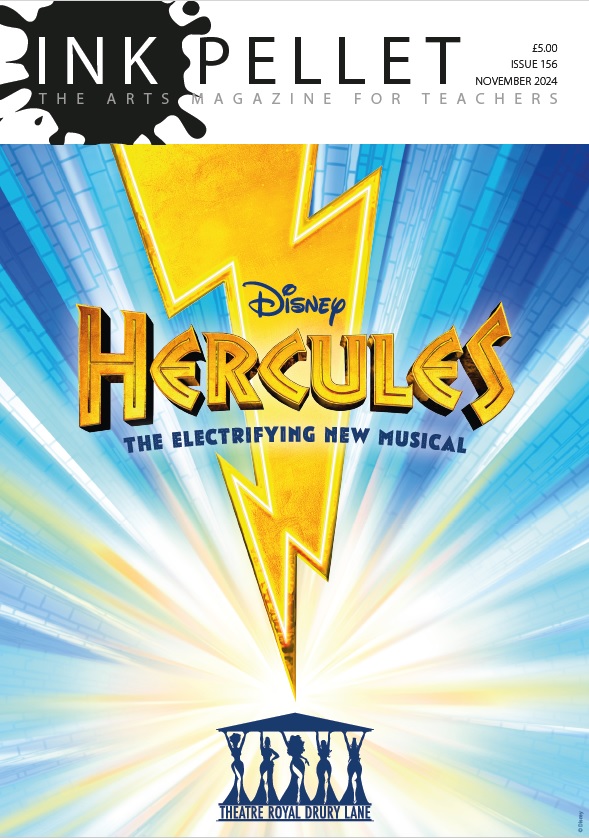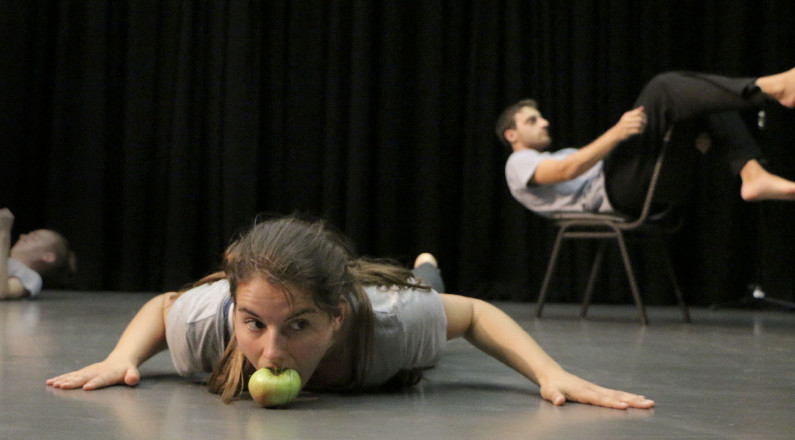A new online resource is being developed utilising the digital tools now available to enhance the teaching and training of physical theatre performers.
Physical actor training (encompassing both body and voice work) describes an approach to the development of the actor’s potential that is not embedded in character- or text-based notions of theatre making. Instead, it focuses more broadly on movement, rhythm, space, vocal sounding and skills enhancement. It has multiple histories in writing, often connected to studies of specific directors like Jacques Lecoq, Jerzy Grotowski or Vsevelod Meyerhold, to name but three; but often such texts focus more on their dramaturgy, philosophy context or rehearsal process than their specific mode of training actors. With some notable exceptions, few of these books give a very clear or strong sense of what happens or happened in the training studio or workshop, and how the director/teacher actually trained others. One way of explaining this lack might be that writing is not a productive vehicle for documenting and analysing performer training. After all, how easily can you describe a sound, a tempo shift, a movement of the arm, or a complex pair balance? This is especially the case with work that is not predominantly text-based, such as physical acting, with work that does not necessarily start with a play text.
You might well wonder if there aren’t too many acting books already. Many operate as guide books, instructing the reader in ‘how to act’, including of course Konstantin Stanislavski’s own foundational texts. But these often have limitations for the contemporary practitioner, teacher and theatre scholar for a range of reasons. They might be anachronistic or they present a specific route to follow, predicated on a model of doing rather than doing and reflecting. This can be limiting for the more self-reflexive and flexible performer working within and towards the cultural and disciplinary diversity of today’s performance modes. Many of these texts also do not function well outside of the parameters of the particular approach of the teacher or across different forms and cultures (e.g. Stanislavski’s approach is tied to Western naturalism and character development). We need to find more sophisticated models for today’s post-dramatic theatre and performance, as Hans-Thies Lehmann conceived it (2006). Perhaps also the purpose of such books is not entirely clear. Are these books meant as vehicles to train the actor, or do they merely support the training the actor might already be following or have followed?
It seems a more productive choice today to use digital tools for the documentation and analysis of processes of performer training. Such methods and formats extend the viewer’s insights – one can hear the students’ responses as well as teaching instruction, the to and fro dialogue and learning (and failing) that is central to actor training. One can also see what is being discussed, break it down into sequences, enhance it with onscreen annotation, embellish it with audio. And that’s just the start. Recent developments in practice-as-research and digital technologies and ongoing thinking about the reflexive practitioner all reveal the extensive potential of digital online resources for actor training.
‘Physical Actor Training – an online A-Z’ is intended between A-Z and to be a pioneer in this emerging field. It will be published in March 2018 by Methuen Drama Bloomsbury as part of their Drama Online resource. The A-Z will comprise 56 short (and some long) films such as: A = Acrobatics B = Breath C = Craft K = Kick O = Openness V = Vocal Release. Accompanying commentaries and further reading as well as podcasts will be included in the October 2018 relaunch. The A-Z reveals the complexity of the training process with 6 student trainees from across the world. It is crucial for the project that we will hear their voices and reflections on the work. The training depicted is foundational rather than advanced, but anticipate that the materials will be of use at all levels, from novice student through to teacher or trained performer. The resource is not meant to replace the teacher but to support and enhance their work, whoever the teacher or student may be. An interdisciplinary investigation across film and drama, the A-Z will also demonstrate the benefits of deploying practice-as-research methods and using film in the ‘digital studio’ to enhance actor training. Our ‘digital studios’ have provided useful background workshops to help us understand how best to capture the training experience. The A-Z project will thus propose new methods for researching as well as teaching training, perhaps even changing the way we actually train in our increasingly digital future.
Until the project is officially published, materials are being shared on a companion website. As well as for seeking feedback, The Digital Performer (https://thedigitalperformer.co.uk) explores the potential of using online platforms and digital tools to enhance the experience of performer training in professional and educational contexts. The website will also enable us to show you ‘backstage’, to reveal some of the filming approaches we have developed for what we are calling ‘The Filmic A-Z’.
The A-Z’s training and project team is led by Paul Allain, Professor of Theatre and Performance at the University of Kent with coinvestigator Professor Frank Camilleri from the University of Malta. Filming was done by Peter Hulton (Arts Archive) with the project’s main collaborator, Stacie Lee Bennett, who oversees editing and day to day project management. The A-Z process has been presented in Malta, Singapore, Barcelona, Poland and in UK conservatoires and universities to ensure that it has an international perspective and wide applicability. Look out for it online in March 2018.



